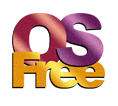This is an old revision of the document!
BIND
Brief
Bind real-mode Family API stub.
Syntax
| BIND | ||||||||||||||||||||||||||||||||
| drive | path | |||||||||||||||||||||||||||||||
| infile | ||||||||||||||||||||||||||||||||
| drive | path | |||||||||||||||||||||||||||||||
| implib | ||||||||||||||||||||||||||||||||
| drive | path | |||||||||||||||||||||||||||||||
| linklib | ||||||||||||||||||||||||||||||||
| drive | path | |||||||||||||||||||||||||||||||
| /? | ||||||||||||||||||||||||||||||||
| /H[ELP] | ||||||||||||||||||||||||||||||||
| /M[AP] | ||||||||||||||||||||||||||||||||
| /N[AMES] | ||||||||||||||||||||||||||||||||
| /NOLOGO | ||||||||||||||||||||||||||||||||
| /O[UTFILE] | ||||||||||||||||||||||||||||||||
| /Q[UIET] | ||||||||||||||||||||||||||||||||
infile
The name of the OS/2 program to be bound. BIND looks in the current directory unless you specify a complete path name. If you provide no extension, .EXE is assumed.
implib
The names of one or more import libraries. Use this field if your program calls functions imported using import libraries. You can specify the file APILMR.OBJ, which provides a 64K default data segment when running in real mode.
linklib
The names of one or more libraries and object files. Use this field to supply object code needed to resolve dynamic-link calls. Separate file names with spaces.
BIND automatically searches for API.LIB and DOSCALLS.LIB/OS2.LIB. If used Vio/Mou/Kbd subsystem and/or DLL loading then DLL.LIB also linked. Depending on usage of AVS/AMS/AKS VIOSF.LIB, MOUF.LIB, KBDF.LIB searched, if used. Otherwise MOUS.LIB, VIOS.LIB, KBDS.LIB are linked.
If you want additional libraries, be sure to specify the full path name.
options
BIND options must appear last on the command line. You can specify options in uppercase or lowercase and use a single letter or the full option name. For example, /M, /m, /MAP, and /map are equivalent.
/?
Displays Help
/HELP
Displays Help
/MAP
Generates Link Map File
/NAMES
Specifies Protected-Mode Functions
/NOLOGO
Suppresses Sign-On Banner
/OUTFILE
Specifies Name of Bound Program
/QUIET
Suppress output




